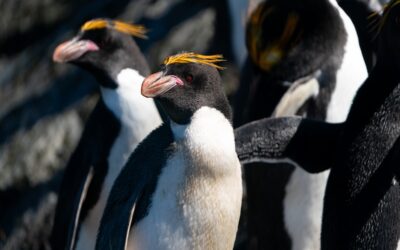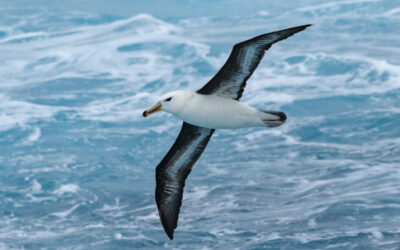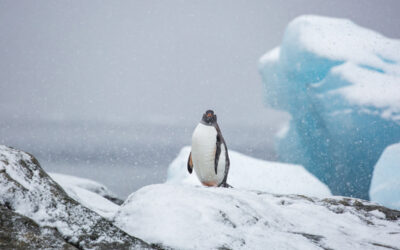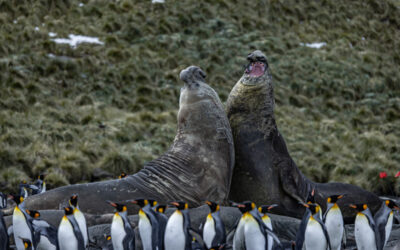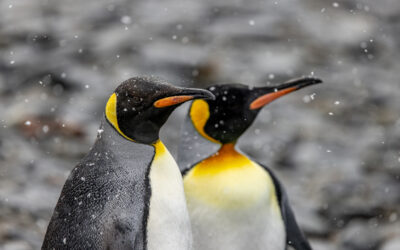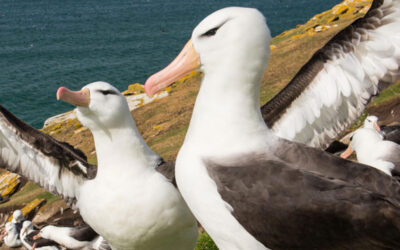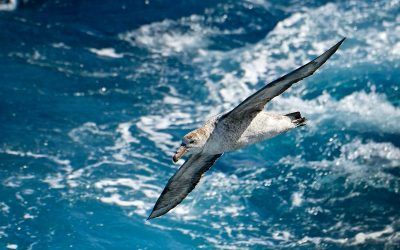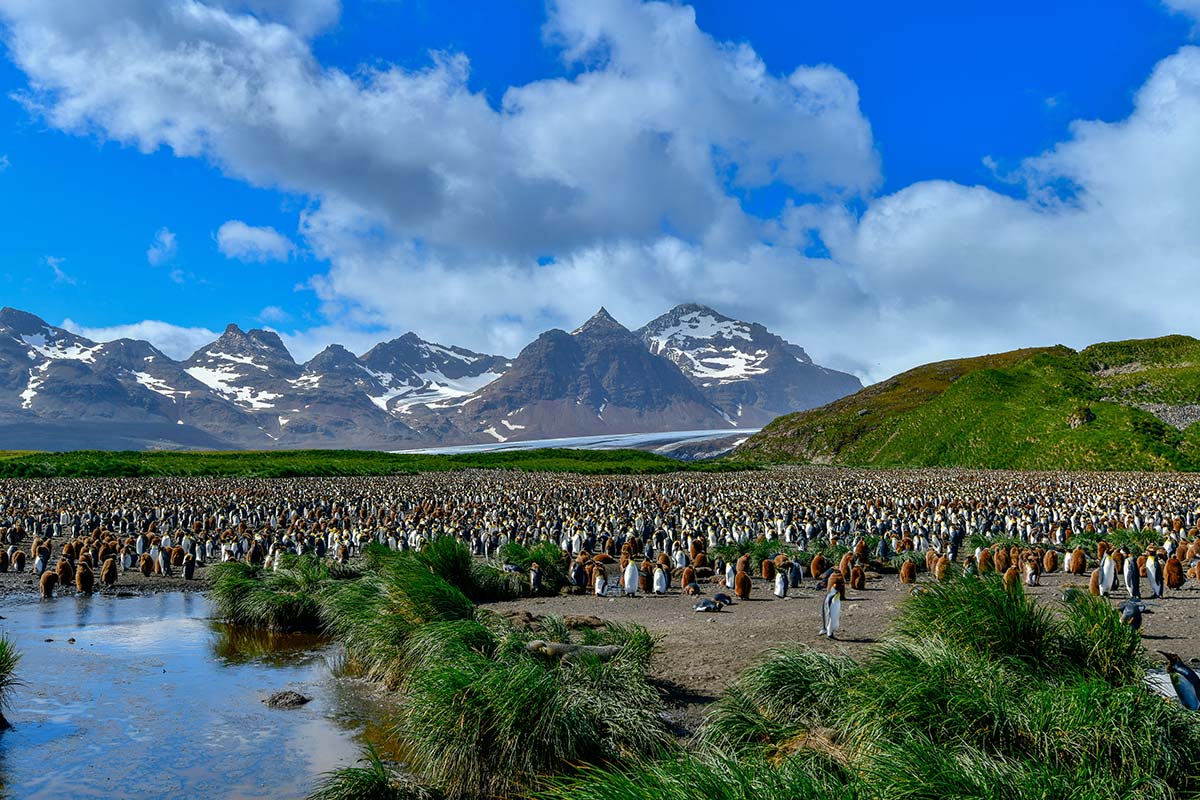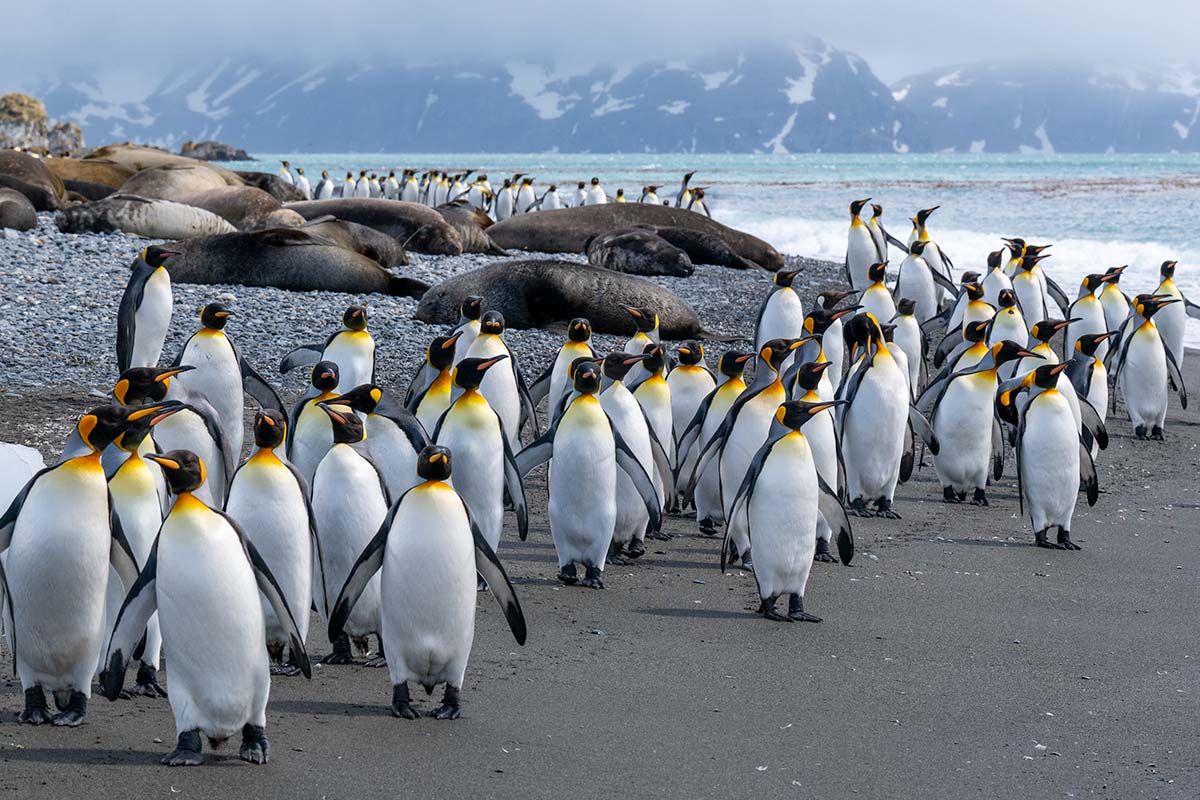The Falkland Islands
Lightly Populated, Densely Fascinating
Off the coast of Patagonia lies the windswept Falkland Islands – a distinctly British archipelago with red phone boxes, cosy pubs and penguins galore. Comprising the larger islands of East and West Falkland, and 776 smaller islands (only fifteen of which are inhabited), the Falklands are one of the most remote and least densely populated places on Earth, with only around 3,500 residents. The islands are believed to have been uninhabited when British Captain John Strong sailed between the two main islands, naming the strait between them ‘Falkland Sound’, christening the islands with the name by which they are known today.
Area of the Falkland Islands
- 12.173 km²
Population of the Falkland Islands
-
3,662 (excluding military personnel)
Why Travel to the Falkland Islands
A diverse wildlife population that includes over 200 species of birds, including 5 species of penguins and 80% of the world’s black-browed albatross, combined with a small but welcoming population, make the Falkland Islands a perfect addition to any journey through the South Atlantic.
Quintessentially British
The Falkland Islanders are primarily descended from British settlers, although over 60 nationalities are represented, from Chilean ranchers to the more recent community of Zimbabwean minesweepers who made their home on the Islands after the 1982 conflict. While the islands are surprisingly diverse, they are distinctly British – expect to see red phone boxes, pounds sterling changing hands and fish and chips served up in traditional harbourside pubs. While Falkland Islanders are proud of their British heritage and citizenship, most generally consider themselves ‘Kelpers’ first and foremost, and the two identities are seen as inextricably linked.
Islas Malvinas?
The Argentine claim to the Falkland Islands (known in Spanish as Islas Malvinas) has existed since 1833, and also includes South Georgia and the South Sandwich Islands. In 1982, Argentina invaded the Falklands, sparking a 74-day war in which Britain regained control, with 694 Argentine and 255 British casualties. Although diplomatic relations were restored in 1990, the sovereignty dispute remains unresolved. The population of the islands overwhelmingly support remaining British.
Penguin Paradise
One can’t go far on the Falklands without meeting a penguin – indeed, from coins, to newspapers to souvenirs, penguins are a vital part of the Falkland identity. Five species are resident on the islands, and the Falklands are probably the only place on Earth where visitors can see penguins and sheep on the same hillsides. The islanders are fiercely protective of their incredible nature, and there are widespread conservation efforts throughout the islands to assist these charismatic birds and keep the populations of predatory rats and mice under control. Penguins and their eggs were once a vital part of the islanders diet, and while the tradition continues on a small scale (with appropriate licensing), locals these days prefer to meet not eat their feathered friends!
Danger - calories!
No visit to the Falklands is complete without a good old fashioned Smoko – the Falklands term for a tea break. A traditional Falkland Islands tea is an extravagant affair, with a huge variety of cakes, biscuits and other sweet treats on offer, and of course lashings of scalding hot British tea. Many of the outer islands offer Falklands tea to visitors, as do cafes and hotels in Stanley – beware calories!
Squids for quids
The biggest export from the Falkland Islands by far is squid, totaling $309 million, dwarfing all other exports. The main target is the Patagonian longfin squid, which is usually caught on jigs at night, using powerful lights to attract the mollusks to the surface. These vessels with their skeletal fishing equipment can often be seen off the coast of Stanley or in the harbour making repairs. The main export market is Spain, where the majority of calamares and other squid-based dishes actually originate thousands of miles away in the Falklands. For a true taste of the islands, many local pubs offer squid and chips – a twist on the traditional British classic.
Map of the Falkland Islands
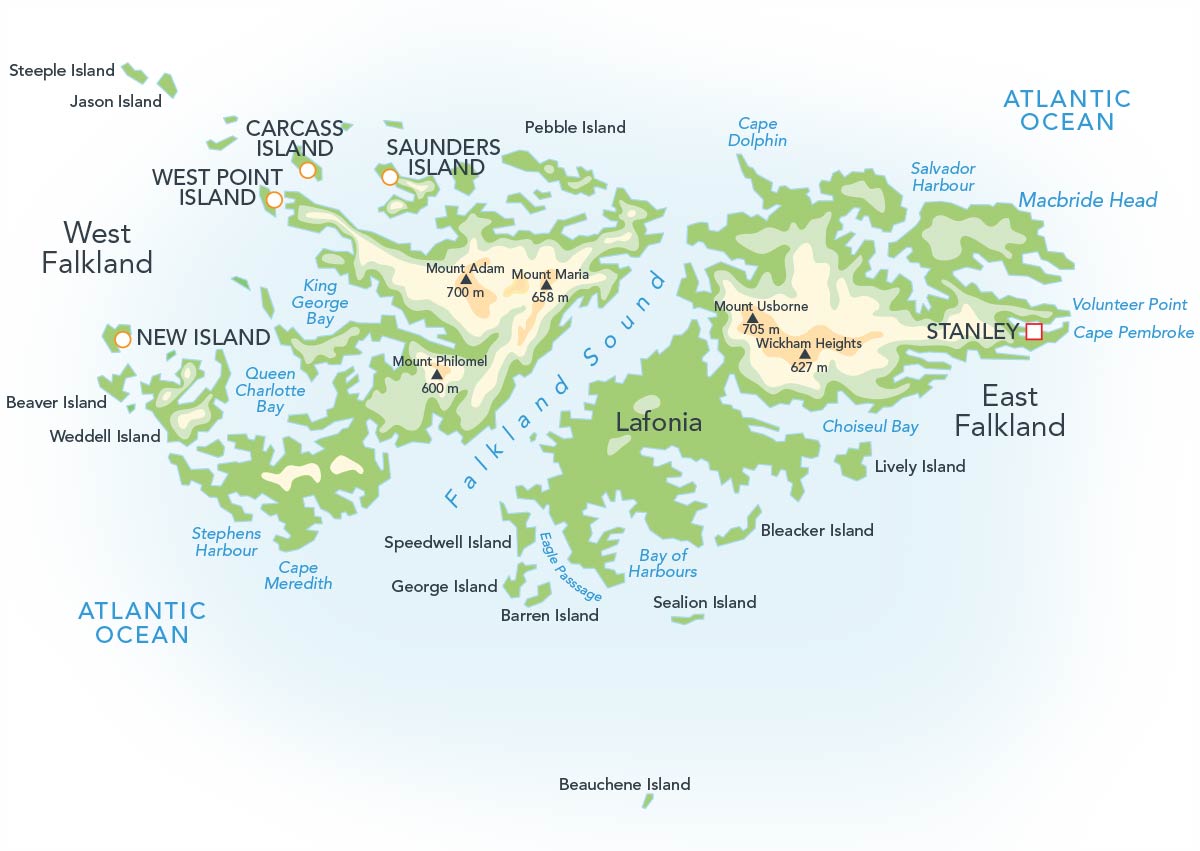
Geology of the Falkland Islands
The rugged, hilly terrain of the Falklands is shaped by millions of years of tectonic evolution, and geologically the islands have more in common with South Africa than with South America. Some of the oldest rock formations, found in the southwestern Cape Meredith area, date back around 1.1 billion years. However, the majority of the islands formed around 400 million years ago in a basin between South America, South Africa and west Antarctica – the margins of the supercontinent Gondwana. Marine fossils suggest a vibrant ecosystem during this time, halted as Gondwana became glaciated around 300 million years ago. Around 130 million years ago, Gondwana began to break up, and the fragment of continent which would become the Falklands drifted towards South America as the South Atlantic Ocean opened – a process which continues to this day. One of the most distinctive geological features of the islands is the presence of extensive stone runs—vast boulder fields formed by freeze-thaw processes during the last ice age.
Wildlife of the Falkland Islands
Only one native land mammal existed on the Falkland Islands – the now extinct warrah, a fox-like canid. The lack of mammals means that birds fill most ecological niches on the islands. Geese graze on the rocky hillsides, and striated caracaras and turkey vultures are among the apex predators on land. The surrounding nutrient-rich waters and the maze of islands, channels, and inlets support a rich marine ecosystem. Fourteen species of marine mammals, including South American sea lions, elephant seals, orcas, and Humpback whales, are common, while the islands host five species of penguin and 80% of the world’s Black-Browed Albatross. The Falkland Islands host some of the largest variety of seabirds on Earth, including five species of penguins (Gentoo, King, Magellanic, Macaroni and Southern Rockhopper) that breed on the islands, as well as 80% of Earth’s black-browed albatross. These often nest in large mixed colonies which can be visited on the outer western islands, with rockhopper penguins raising their chicks safe from predators beneath the sheltering albatross nests.
You might recognize this penguin from the famous Sony Pictures Animation movie 'Surfs Up'. Even though in real life they do not surf, with its vivid...
With over 22 different species worldwide, and considered one of the largest living flying seabirds by its wingspan (which can be larger the size of...
Antarctica’s penguins are one of the top reasons why people desire to travel to Antarctica. On the White Continent, you will certainly see hundreds...
A trip to Antarctica is a dream for animal lovers, with its amazing array of unique creatures. Even if you're not an avid animal enthusiast, the...
When we arrive in South Georgia, the mighty King Penguin is a sight to behold. When you see your first one, two, or three - that’s exciting. When...
What does the word 'albatross' mean to you? If you golf, you may be familiar with the term as it means you are three under par on a hole. The word...
There is no mightier bird than the Wandering Albatross, a bird surrounded by lore and impressive in their size and wingspan. Also known as the snowy...
Climate of the Falkland Islands
The Falkland Islands experience cool summers, with average highs around 13°C in January and February, and mild winters, where temperatures drop to about 2°C from June to August. The islands are famously windy, with no month experiencing an average windspeed below 15 knots. The climate is notoriously changeable – northerly winds bring warm air from South America, while southerlies bring icy blasts from the Antarctic, and experiencing all four season in a day (or even an hour) is common!
| DAY TEMP | NIGHT TEMP | PRECIPITATION | DAYLIGHT HOURS | |
|---|---|---|---|---|
| January | 56°F (13°C) | 47°F (8°C) | 1.57 in (40 mm) | 16 hours |
| February | 56°F (13°C) | 47°F (8°C) | 1.50 in (38 mm) | 14.3 hours |
| March | 53°F (11°C) | 45°F (7°C) | 1.77 in (45 mm) | 12.4 hours |
| April | 48°F (9°C) | 42°F (5°C) | 1.69 in (43 mm) | 10.4 hours |
| May | 43°F (6°C) | 38°F (3°C) | 1.97 in (50 mm) | 8.7 hours |
| June | 40°F (5°C) | 36°F (2°C) | 1.77 in (45 mm) | 7.9 hours |
| July | 40°F (4°C) | 36°F (2°C) | 1.97 in (50 mm) | 8.4 hours |
| August | 42°F (5°C) | 36°F (2°C) | 1.89 in (48 mm) | 9.9 hours |
| September | 44°F (7°C) | 38°F (3°C) | 1.50 in (38 mm) | 11.8 hours |
| October | 48°F (9°C) | 40°F (4°C) | 1.57 in (40 mm) | 13.8 hours |
| November | 52°F (11°C) | 43°F (6°C) | 1.57 in (40 mm) | 15.6 hours |
| December | 54°F (12°C) | 46°F (8°C) | 1.77 in (45 mm) | 16.6 hours |
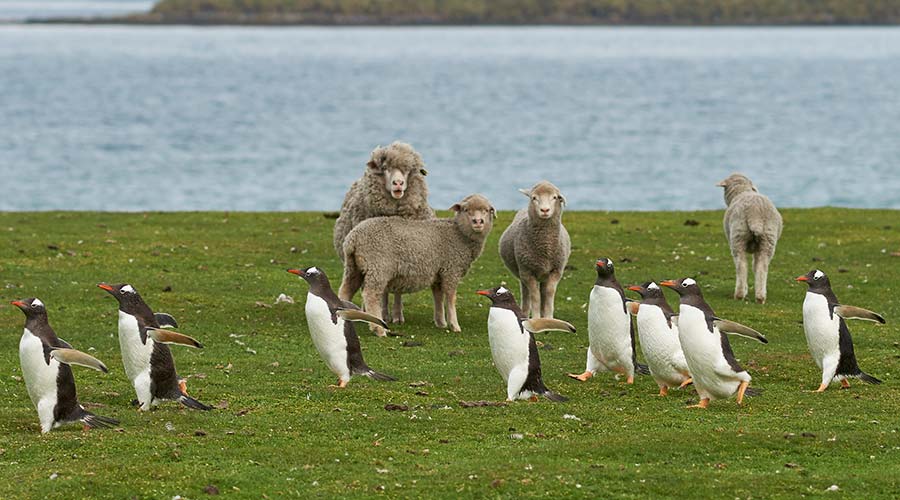
Economy of the Falkland Islands
With only 3,500 Kelpers on the islands, the Falklands’ economy is understandably tiny; blessed with enormous natural resources, however, it is 10th in global GDP per capita. The islands’ economy was once heavily based on services for ships rounding Cape Horn or passing through the Straits of Magellan (which often required repairs), and the export of wool. Indeed, the Falkland Islands are still home to almost half a million sheep, outnumbering the humans 142-to-1. Lamb, mutton, and high-quality wool continue to be one of the islands’ main exports.
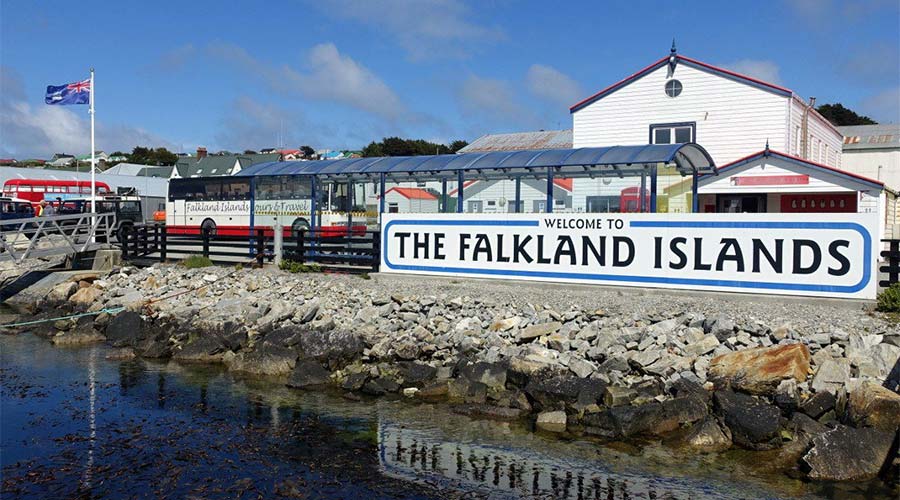
From farming to fisheries
Today, around a third of islanders are employed in the public sector, while a similar number are engaged in farming and ranching. Tourism and oil exploration are fast-growing sectors of the economy, but the biggest contribution to the islands’ economy by far is from the sale of lucrative licenses to catch fish and squid in the islands’ rich waters – one of the most sustainably managed fisheries in the world. Most licenses are sold internationally, with few of the boats actually being based in the Falklands. The Falkland Islands are also a hub for the British Antarctic program, and it is not uncommon to meet Antarctic scientists in the local pubs and cafes, awaiting deployment southward.
Popular Expeditions That Include the Falkland Islands
A selection of our voyages visit the beautiful Falkland Islands, usually in connection with visits to South Georgia and Antarctica. Voyages to the Falkland Islands will typically spend a day on the western side of the islands which is richest in wildlife, and a day in Stanley, the capital of the Islands.

